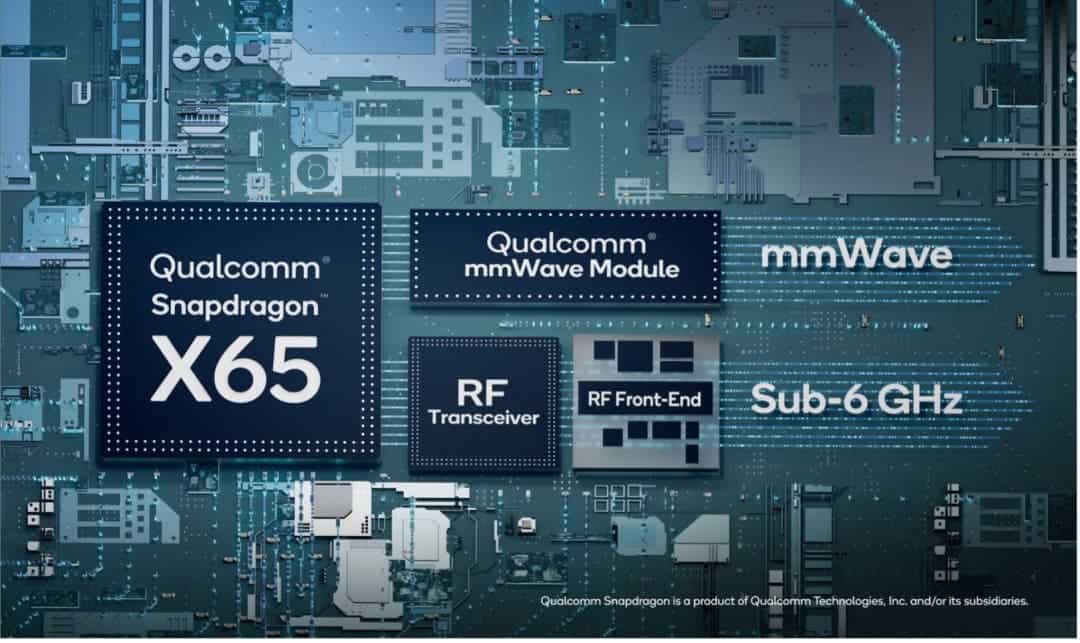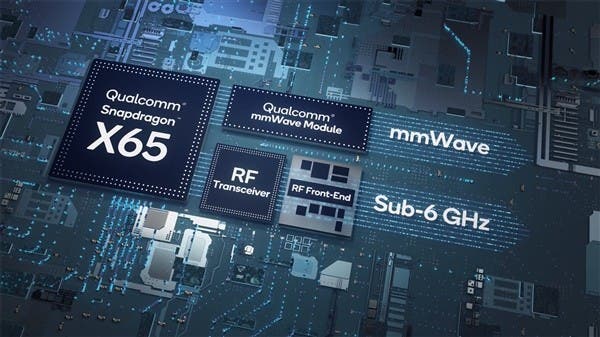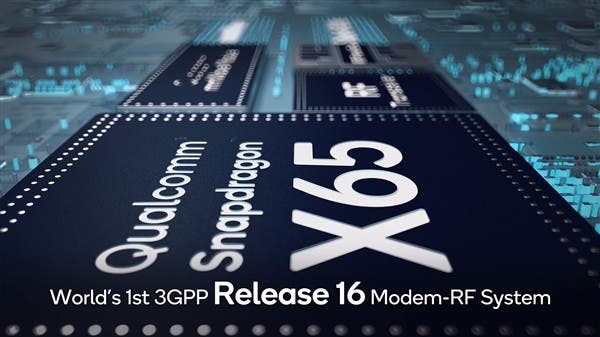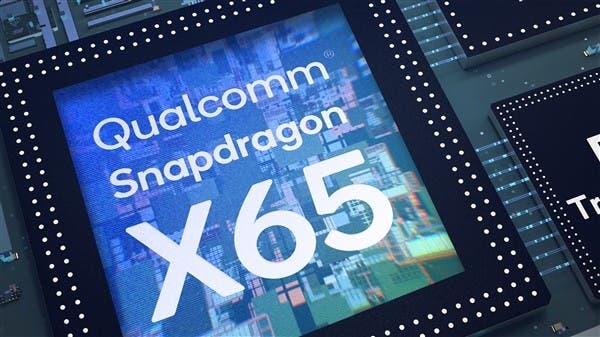In 2020, 5G will accelerate its deployment and popularization worldwide. So in 2021, 5G will enter a new era. Tonight, Qualcomm officially released the fourth-generation 5G baseband Snapdragon X65, and for the first time derived the Snapdragon X62 for the mainstream market, as well as radio frequency support solutions.

5G Deployment
As of now, 140 operators worldwide have deployed 5G commercial networks in 59 countries and regions; 412 operators have invested in 5G construction in 131 countries and regions; more than 40 operators are providing 5G fixed wireless access or home broadband service.
The number of 5G commercial terminals has reached 335, an increase of 51% compared to September 2020. 233 commercial 5G smartphones have increased by 55% compared to September 2020.

5G smartphone shipments are expected to reach 450-550 million units in 2021, becoming the absolute mainstream.
Of course, the 5G deployment process varies from region to region. For example, the United States is simultaneously promoting Sub-6GHz and millimeter waves, while China is still focusing on Sub-6G. This year’s main work is Sub-6G FDD and carrier aggregation commercial millimeter wave, and in South Korea, Japan, Australia and other places, SA 5G has not yet fully landed.
The deployment of 5G in different markets has declined. This puts forward strict requirements on a truly global 5G platform, and this is Qualcomm’s expertise.
Currently, there are more than 800 terminals based on Qualcomm Snapdragon 5G baseband and radio frequency system that have been released or are under design.
Snapdragon X65 Parameters
The Snapdragon X65 5G baseband has a downlink rate of 10Gbps for the first time, which is equivalent to a 10 Gigabit broadband network. It is also the world’s first 5G baseband that complies with 3GPP Release 16 specifications. Also, it has an upgradeable architecture.

What is the concept of 10Gbps? You may not have any impression by looking at the numbers alone. So let’s look back and compare: Ten years ago, when 4G LTE was first deployed, the theoretical maximum rate was only 100Mbps. This is only equivalent to 100M broadband. It has a tenfold increase in ten years.
Also Read: Snapdragon X55 5G Modem Adopted By Over 30 OEMs
Especially since entering the 5G era, this speed has increased dramatically, and it was still 5Gbps two years ago.
The Snapdragon X65 baseband not only has a record-breaking speed, but also brings an upgradeable architecture for the first time. This can provide operators with extreme flexibility.

The Snapdragon X65 baseband with an upgradeable architecture supports enhancement, expansion and customization across 5G market segments. It can be updated through software to support upcoming new features, functions, and rapid deployment of new features of 3GPP Release 16.

Gizchina News of the week
Especially as 5G expands and spreads to new vertical industries such as computing, industrial Internet of things, fixed wireless access, etc., the use of scalable architecture can create future-oriented solutions based on the Snapdragon X65. Supporting new features at any time and extending the terminal life cycle will reduce the total cost of ownership.
In addition to a new generation of top-level smartphones, the Snapdragon X65 baseband can also be widely used in various subdivisions such as PC computers, tablet computers, mobile hotspots, fixed wireless access, industrial Internet of things, 5G enterprise private networks.
Qualcomm’s Mobile Radio Frequency System
5G needs to be fast, with wide coverage and good signals. Especially in the 5G era, coupled with the integration of 4G/3G/2G, the antenna system becomes extremely complicated, and antenna coordination has become a nightmare.

In this regard, the Snapdragon X65 has the world’s first AI antenna tuning technology, which is also the first step for Qualcomm to introduce its more than ten years of AI research and development results into mobile radio frequency systems.
According to Qualcomm, compared with the previous generation technology, the combination of the Snapdragon X65 and AI antenna coordination technology can better detect user interaction. The detection accuracy of the handheld terminal can be increased by 30%, thereby enhancing antenna tuning.
In addition to the latest Snapdragon X65 and Snapdragon X62, this technology also supports the previous generation Snapdragon X60 baseband.
Smart Transmit 2.0
The Snapdragon X65 baseband also supports Smart Transmit 2.0, which is Qualcomm’s unique system-level technology. By using the system sensing function from the baseband to the antenna, it continues to meet the RF transmission requirements while bringing higher levels to the millimeter wave and Sub-6GHz frequency bands. It provides a faster upload rate and wider network coverage.
PowerSave 2.0
In addition, energy-saving technologies are essential for the 5G heating and power consumption characteristics.
The Snapdragon X65 first supports Qualcomm 5G PowerSave 2.0, which is based on the new power saving technology defined by 3GPP Release 16, such as Connected-Mode Wake-Up Signal.
Envelope Tracking
In addition, Qualcomm also launched the seventh-generation 5G/4G broadband envelope tracking solution QET7100, optimized for terminal shape design and power consumption, with a smaller board area, higher energy efficiency, and better performance.

It allows terminal manufacturers to flexibly choose power amplifiers. A single tracker can support multiple outputs, multiple power amplifiers, and 100MHz uplink bandwidth, UL-MIMO (upload multiple input multiple output).
The company claims that the energy efficiency of the new technology can be 30% ahead of the best performance of competing products.
Other Improvements
Qualcomm also upgraded the millimeter wave antenna module to Qualcomm 545, which is also the fourth generation millimeter wave module for mobile terminals by Qualcomm.

Currently, Qualcomm millimeter wave modules support global millimeter wave frequency bands, including 26GHz, 28GHz, 39GHz, 41GHz in North America, South Korea, Japan, Europe, Australia, Southeast Asia and other places.
Compared with the Snapdragon X65, the main difference between the Snapdragon X62 and the Snapdragon X65 is the simplified downlink bandwidth. The millimeter wave frequency band has changed from 1GHz to 400MHz, and the Sub-6G frequency band has changed from 300MHz to 120MHz. As a result, the peak download rate has gone from 10Gbps to 4.4Gbps.
Others, such as support for 3GPP Release 16, millimeter wave and Sub-6G aggregation, and baseband to antenna solutions, are completely reserved and are also manufactured in 4nm process.





